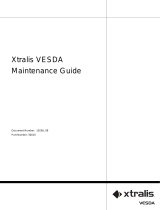
S-24 VLF ● S-36 VLF ● S-44 VLF ● S-57 VLF – USER MANUAL
1 Safety
The cable test set is a device used to generate high voltages. It may be used for voltage proof
testing of the insulation of cables, electrical installations and items of equipment. By measuring the
current and voltage by means of integrated measuring devices, the insulation resistance of the equip-
ment under test can be determined.
The tester is comprised of an operating unit and a high-voltage unit. Thanks to its small dimen-
sions and a relatively low weight, it is portable and can be used directly at the equipment to be tested.
Clearly arranged control elements and indicators as well as a simple menu-prompted operation ensure
comfortable handling.
A special ground safety circuit provides for a high degree of safety.
Any person intending to install, operate, maintain or repair this unit must have carefully read this
manual and understand the information given therein.
At the time of delivery, the device and its accessory equipment represent the state of the art in the
area of safety technology. However, due to the specific nature of operations, there may exist points
and parts on the unit and its associated peripheral equipment, which cannot be fully protected without
unreasonably affecting its function and operation. Consequently, appropriate personal safety practices
are indispensable for preventing harm to personnel and the unit itself.
The following safety hints must be duly observed!
General instructions
Only duly qualified, trained and / or instructed personnel shall be allowed to perform
work on this unit and its peripheral equipment. Access to the unit and equipment by oth-
er persons must be prevented.
This manual must be kept available to supervising, operating and maintenance person-
nel for ready reference.
Using the device in a way which is not in conformity with the intended purpose may be
dangerous to health and life, to the unit and associated equipment, and may also affect
its appropriate use. The unit may exclusively be used for the purpose for which it has
been designed by the manufacturer.
It is unacceptable to operate:
a damaged meter which is completely or partially out of order,
leads with damaged insulation,
a meter stored for an excessive period of time in disadvantageous conditions (e.g.
excessive humidity).
Carry out checks on a regular basis to make sure that safety regulations are complied
with during operation and maintenance.
The device may be operated only by authorised, appropriately qualified persons.
The device and the associated peripheral equipment must at all times be in an impecca-
ble condition in technical respect.
Only genuine parts may be used in the device and the associated peripheral equipment,
because non-original parts may endanger the required safety. It is not permitted to han-
dle or operate the device in any way which may affect its safety.
The person using the device shall be obliged to immediately report to the competent su-
pervisor any changes noticed on the device.
The operator shall also be obliged to put the device immediately out of operation if an
incident occurs which may affect the safety of personnel. The device may be put back
into operation only after the cause of the incident has been eliminated.
Electrotechnical instructions
The device and all accessory equipment must be connected in conformity with the appli-
cable regulations.























